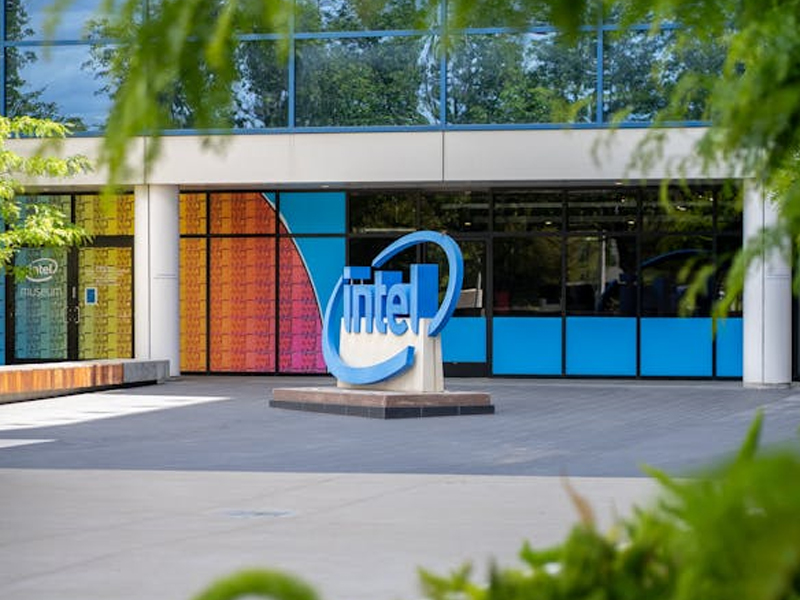DARPA Demonstrates Tiny Silicon System On a Chip
Uncategorized
 Defense Advanced Research Projects Agency, that is, DARPA has claimed that they have demonstrated powerful, lighter and less expensive Silicon System on a chip. They have created a small all silicon radio transmitter chip, which operates at 94 gigahertz. This lighter chip is more powerful as compared to current gallium. The main goal behind this development is to develop better communication hardware for radar and radio systems. DARPA has stated that this Silicon chip transmits in millimeter wave frequencies. These frequencies are part of the electromagnetic spectrum. It is mainly useful for guidance system, radar and military technology. For the first time it has happened that, Silicon only “System on a chip”, which is smaller and lighter, has achieved these millimeter wave frequencies, which are high frequencies. This microchip-sized ‘System on a chip’ can be used for various applications, such as radar and communications.
These silicon chips are part of DARPA’s the ELASTx program. The ELASTx is Efficient linearized All Silicon Transmitter ICs. DAPRA’s researchers worked with Northrop Grumman Aerospace system to develop the all-Silicon System on Chip transmitter. The Silicon on chip transmitter uses the power amplifier, which is required to change the signal requirements. DARPA stated that, these capabilities allow efficiency optimization. This Silicon SOC transmitter can change the frequencies, which helps to communicate the waves of different types. Silicon “System on chip” delivers a large amount of data much faster. As a wide range of modulation formats can be supported by this small package, then communication with multiple systems is really possible. For communication, we can use different waveforms from silicon chip. This also cuts down the need of more equipments.
DARPA has stated that many millimeter wave communication systems, which provide high efficiency and throughput, use integrated circuits made from gallium nitride or gallium arsenide. These circuits have high power and efficiency, but they are costly. Also, these circuits are unable to integrate with silicon electronics. As compared to these expensive circuits, integrated circuits, which are made from Silicon only, are much cheaper. DARPA has stated that these Silicon chips are not demonstrated for efficiency and high power till the date.
Generally, we require many IO cables, assemblies and multiple circuit boards. But DARPA has miniaturized onto one small and lighter Silicon chip. DARPA has found the new stage of miniaturizing communication systems. DARPA’s Silicon “System on a chip” is power booster and useful transmitter. DARPA’s Silicon “System on a chip” design claims the various benefits of the radio frequency communication systems, in terms of smaller, lighter, less expensive and more powerful systems. Silicon ‘System on a chip’ definitely boost the next generation RF communications. This new Silicon SOC design surely starts the more investigation on new designs for military radio frequency systems. In future, it is also possible, that less hardware is needed for long range communication between computer systems. It may happen that communication between various systems is possible even without switching between chips.
Defense Advanced Research Projects Agency, that is, DARPA has claimed that they have demonstrated powerful, lighter and less expensive Silicon System on a chip. They have created a small all silicon radio transmitter chip, which operates at 94 gigahertz. This lighter chip is more powerful as compared to current gallium. The main goal behind this development is to develop better communication hardware for radar and radio systems. DARPA has stated that this Silicon chip transmits in millimeter wave frequencies. These frequencies are part of the electromagnetic spectrum. It is mainly useful for guidance system, radar and military technology. For the first time it has happened that, Silicon only “System on a chip”, which is smaller and lighter, has achieved these millimeter wave frequencies, which are high frequencies. This microchip-sized ‘System on a chip’ can be used for various applications, such as radar and communications.
These silicon chips are part of DARPA’s the ELASTx program. The ELASTx is Efficient linearized All Silicon Transmitter ICs. DAPRA’s researchers worked with Northrop Grumman Aerospace system to develop the all-Silicon System on Chip transmitter. The Silicon on chip transmitter uses the power amplifier, which is required to change the signal requirements. DARPA stated that, these capabilities allow efficiency optimization. This Silicon SOC transmitter can change the frequencies, which helps to communicate the waves of different types. Silicon “System on chip” delivers a large amount of data much faster. As a wide range of modulation formats can be supported by this small package, then communication with multiple systems is really possible. For communication, we can use different waveforms from silicon chip. This also cuts down the need of more equipments.
DARPA has stated that many millimeter wave communication systems, which provide high efficiency and throughput, use integrated circuits made from gallium nitride or gallium arsenide. These circuits have high power and efficiency, but they are costly. Also, these circuits are unable to integrate with silicon electronics. As compared to these expensive circuits, integrated circuits, which are made from Silicon only, are much cheaper. DARPA has stated that these Silicon chips are not demonstrated for efficiency and high power till the date.
Generally, we require many IO cables, assemblies and multiple circuit boards. But DARPA has miniaturized onto one small and lighter Silicon chip. DARPA has found the new stage of miniaturizing communication systems. DARPA’s Silicon “System on a chip” is power booster and useful transmitter. DARPA’s Silicon “System on a chip” design claims the various benefits of the radio frequency communication systems, in terms of smaller, lighter, less expensive and more powerful systems. Silicon ‘System on a chip’ definitely boost the next generation RF communications. This new Silicon SOC design surely starts the more investigation on new designs for military radio frequency systems. In future, it is also possible, that less hardware is needed for long range communication between computer systems. It may happen that communication between various systems is possible even without switching between chips.
You Might Be Interested In:
Frequently Asked Questions?

01
AI & ML
Meta Llama 3: Jack of All Trades, Master of None (But Still Free!)
May 1, 2024

01
Tech Gadgets
Don’t Trash Your Tech! Combating E-waste & Embracing Responsible Gadget Disposal
Apr 30, 2024

01
Blockchain Technology
Mixed Signals: Decoding Intel’s Stock Slump Despite Earnings Beat
Apr 29, 2024
01
Tech news
Is TikTok Facing a US Ban? Decoding the New Law and Its Impact on Millions of Users
Apr 27, 2024
SUSBSCRIBE TO OUR NEWSLETTER
Join our subscribers list to get the latest news and special offers.
Meta Llama 3: Jack of All Trades, Master of None (But Still Free!)
Don’t Trash Your Tech! Combating E-waste & Embracing Responsible Gadget Disposal
Mixed Signals: Decoding Intel’s Stock Slump Despite Earnings Beat
Beyond Likes and Followers: Exploring the Evolving Landscape of Social Media